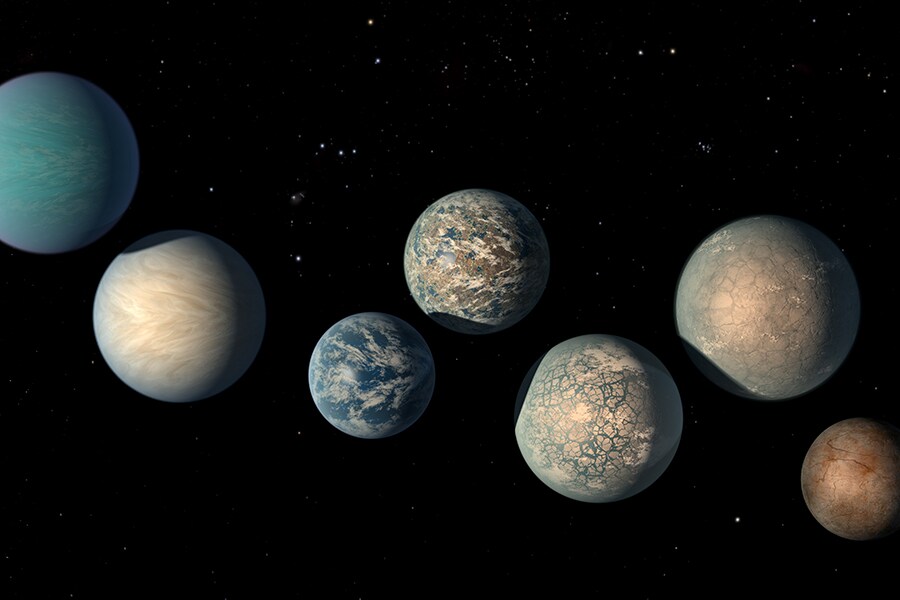
'Super Earths' and 'Hot Jupiters': Imagine another world. Now imagine 5,000 more
In January 1992, a pair of astronomers found planets outside our solar system. Now, 30 years later, the list of known exoplanets has just topped 5,000, according to NASA
 This illustration shows the seven Earth-size planets of TRAPPIST-1, an exoplanet system about 40 light-years away, based on data current as of February 2018. The image shows the planets relative sizes but does not represent their orbits to scale. The art highlights possibilities for how the surfaces of these intriguing worlds might look based on their newly-calculated properties. The seven planets of TRAPPIST-1 are all Earth-sized and terrestrial. TRAPPIST-1 is an ultra-cool dwarf star in the constellation Aquarius, and its planets orbit very close to it.
Image: NASA/JPL-Caltech/R. Hurt, T. Pyle (IPAC)
This illustration shows the seven Earth-size planets of TRAPPIST-1, an exoplanet system about 40 light-years away, based on data current as of February 2018. The image shows the planets relative sizes but does not represent their orbits to scale. The art highlights possibilities for how the surfaces of these intriguing worlds might look based on their newly-calculated properties. The seven planets of TRAPPIST-1 are all Earth-sized and terrestrial. TRAPPIST-1 is an ultra-cool dwarf star in the constellation Aquarius, and its planets orbit very close to it.
Image: NASA/JPL-Caltech/R. Hurt, T. Pyle (IPAC)
In January 1992, a pair of astronomers reported a discovery that changed the course of scientific history: They found planets outside our solar system.
The detection of the first confirmed exoplanets — the term for worlds that orbit other stars — validated dreamers who for centuries believed that “innumerable celestial bodies, stars, globes, suns and earths may be sensibly perceived therein by us,” in the words of the Renaissance polymath Giordano Bruno. One such detection — the world 51 Pegasi b in 1995 — led to the award of the 2019 Nobel Prize in physics to Michel Mayor and Didier Queloz.
Now, 30 years later, the list of known exoplanets has just topped 5,000, according to NASA. This dazzling abundance and variety of worlds has come into view with the aid of ever-more sophisticated space telescopes. There are “hot Jupiters” that orbit scorchingly close to their stars and beefed-up versions of our planet known as “super-Earths.” Rogue planets, unmoored from their stars, wander interstellar space. And some worlds show signs of habitability, meaning they could host alien life.
To celebrate the milestone, experts and enthusiasts shared their favorite exoplanets or exoplanetary systems among the thousands of worlds to choose from.
A dead star’s worlds
Poltergeist and Phobetor were the first confirmed exoplanets ever spotted. Alexander Wolszczan and Dale Frail detected the planets orbiting a neutron star, a type of dead star, using the Arecibo telescope in Puerto Rico.
©2019 New York Times News Service







